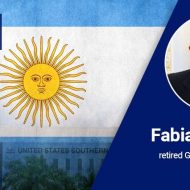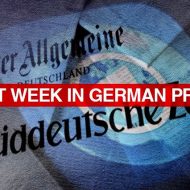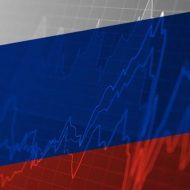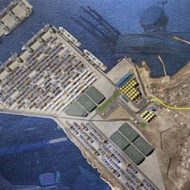On the one hand the Turkish economy is growing and gaining strength in some industries, notably the defense industry, on the other, it has hit record inflation levels and the people are getting impoverished.
In addition to its geopolitics, Türkiye is also the subject of debates with its economy. In recent times, the issue seems to be focused on criticizing the Turkish economy as being “unorthodox”, as reflected by the writings of many Western economists and magazines such as the Economist.
With the appointment of Mehmet Şimşek as treasury and finance minister, some in the international markets are expecting a return to “economic orthodoxy”. This is a prominent issue in Türkiye as well.
We made a comprehensive interview about all this with Serhat Latifoğlu.
Serhat Latifoğlu is a hedge fund manager and newspaper columnist.
He worked in the derivative markets departments of various investment banks and brokerage houses in Türkiye. He established domestic and international derivatives departments in almost all of these institutions. He manages a fund based on behavioral finance principles and artificial intelligence that trades in international markets and provides financial consultancy to some of the top 100 companies in Türkiye.
What is unorthodox economy policy?
Western European and US media writes that the economic model implemented by the Erdoğan government, especially in the past 4-5 years, is unorthodox. What does this mean? Does that refer to suppressing interest rates? Is this only point of reference, or or are there other factors involved?
Unorthodox policies, in summary, are non-neoliberal developmental and national policies. What is referred to as the “Türkiye Economy Model” in Türkiye corresponds precisely to this. What are its implementations? Using the instrument of interest rates certainly, but the model is not limited to that.
To understand these unorthodox policies, we need to understand the policies referred to as “orthodox”.
The Chicago School
The origins of orthodox policies can be traced back to the Chicago School in the 1960s and 1970s: A monetarist school. We also call it “neoliberalism”. It mainly advocates for more liberalization, financialization and the reduction of state control.
The economic policies based on Chicago School began to be implemented in the 1970s, primarily in the US, and were then imposed on the whole world by the IMF, including Western economies. The US, as is well known, has a liberal economy, but it had turned towards a direction of more state intervention after the 1950s. The Great Crisis of 1929 and the effects it had in the 1930s led to more Keynesian-interventionist economic policies.
Especially in the 1980s, a new and profound liberal orientation emerged. What is included in these orthodox policies? There is mainly a monetary approach, an understanding of the economy based on controlling the money supply. The aim of this model was to keep the inflation problem that arose in the 1970s under control. In other words, there was a thesis that maintaining control over the economy, or rather suppressing inflation, essentially relies on control over the money supply.
This thesis was put into practice. The money supply was reduced and interest rates were increased.
Do you mean interest rates by the FED?
Yes. However let’s add this: the orthodox policies implemented by central banks worldwide are the same. They have all originated from the Chicago School. Neoclassical economists and others added various elements regarding fiscal policies, but mainstream economists including Keynesians, have gradually embraced the foundations of the Chicago School over time.
The Chicago School put into practice
Orthodox policy is one that places the central bank at the center of the economy. As the core policy, it aims to influence and guide the real sector through financial markets using monetary policy instruments.
These policies, of course, came with a set of measures. Free exchange rate regime, free trade, reducing government spending (commonly referred to as the “bitter pill”), privatizations, etc. So it is a set of policies.
What does reducing government spending mean? Reducing salaries, cutting social spending, etc. Even using measures such as delaying salary payments, completely eliminating or suspending social assistance.
Today, there are many economists in Türkiye who favor these policies. One economist openly stated that the implementation of the “bitter pill” is necessary and if needed, the economy should be halted, which in economic terms means recession and unemployment.
These are theories, not absolute truths. However, these were presented as if “science demanded” them. Almost every country that had dealings with the IMF around the world, including independent countries, is forced to implement these policies.
These policies have caused significant devastation wherever they were implemented. National policies aligned with a country’s own goals were destroyed. Türkiye is an exemplary for that.
Since the 1980s, we have witnessed the downsizing of the state, severe damage to the agricultural sector, privatizations, etc. These have caused great harm to Türkiye. The fundamental problems we face today can be traced back to the IMF prescriptions implemented during that period referred to as orthodox policies.
Orthodox policies and global financial oligarchy
These orthodox neoliberal policies, which have gained strength since the 1980s and now dominate the world, are policies suitable for the global financial oligarchy, which has surpassed the real sector by a significant volume. In other words, the global financial oligarchy demands orthodox neoliberal policies. Why? Because they want net real interest, high interest rates which means obtaining returns significantly above inflation and preventing the erosion of their wealth by controlling inflation. They accumulate more wealth by multiplying money.
Moreover, they profit from capital flows, specifically the inflows and outflows of funds to countries made possible by the freedom of capital movements enabling speculative and manipulative gains.
The liberalization of both goods and capital movements in the policy package I mentioned has greatly benefited the global financial oligarchy. Thus, they earned money through the advantages provided by dollarization -which became widespread systematically worldwide after the establishment of the post-1945 world system- and partially through manipulative actions they gained interest rent.
Considering all of this, it can be stated that orthodox policy is by no means a national policy, but entirely serves the global financial oligarchy. That is very evident.
Of course, implementing the instruments of orthodox policy does not always directly serve the global financial oligarchy. They can also be used in independent countries when needed. For example, Russia had to temporarily raise interest rates last year to stop currency manipulation and curb demand for foreign currency. They used the interest rate restriction instrument of orthodox policy, but at the same time, they softened its effects with other policies. They introduced capital controls and took steps to gain control over the dollar and move away from dollarization.
Let’s get back to Türkiye. The current model in Türkiye is a completely national policy. It serves as an alternative economic model to the neoliberal policies in Türkiye since the 1980s.
Türkiye employs various instruments within this model including specific policies for banks, the real sector, etc. These policies as a total are now referred to as the “Türkiye economic model.”
Türkiye’s unorthodox policy: when and why it start?
When did Türkiye start adopting this policy and what were the reasons behind this shift? Was the rise in inflation and the depreciation of the Turkish lira against the dollar a significant reason?
First, note the political reasons. Following the Gezi protests in 2013, there was a rapid outflow of portfolio investments, of “hot money” from Türkiye. Then in early 2014, the Ergenekon-Balyoz trials concluded and nationalist-patriotic political movements and Turkish military cadres were released from prison. After that, the suppression campaign against the PKK terrorist organization began in July 2015 and is still ongoing. The failed coup attempt by the Fethullah Gülen Terrorist Organization (FETÖ) on July 15, 2016, and the military operations in Syria also played a significant role. The Turkish economic model has gradually evolved throughout this period. It was not an instantaneous decision made at a meeting. Rather than that, it emerged and improved through practical experiences and processes. We can now observe that the model has been officially declared as a whole over the past few years.
First: The reduction of interest rates
First came the reduction in interest rates offered to hot money, leading to negative real interest rates. This step triggered the outflow of hot money from the country. In 2013, hot money in Türkiye amounted to 140 billion dollars, whereas now 28 billion dollars.
What do you mean by hot money? What is the period of time you define for the entrance and exit of money in and out of the country to determine it as “hot money”?
Portfolio investments that typically have a duration of less than one year. Actually there are also longer-term portfolio investments that can be preferred if the country’s market requires. But in the case of Türkiye, the majority of the mentioned 140 billion dollars portfolios had durations of less than one year.
During this period, national projects and industrialization have been accelerated, particularly noteworthy in the defense industry. Türkiye has strengthened its already solid infrastructure and introduced a perspective that prioritizes the manufacturing sector and exports.
These two are important because in 2013, the share of manufacturing and exports in gross domestic product (GDP) was around 12%, whereas today both have increased to approximately 30%.
Actually, this new economic orientation started to be officially articulated from 2013 onwards with the term like such as export-driven growth, development, infrastructure investments but didn’t draw much public attention due to the busy political agenda.
Infrastructure investments and “build-operate-transfer” or “public-private partnership”
One of the crucial aspects of the Türkiye economy model are infrastructure investments. In recent years, Türkiye has made the largest infrastructure investments in the history of the Republic. This is something that neoliberals despise. In orthodox economic policies, infrastructure investment, public spending and development are not favored. Another important point is that Türkiye’s infrastructure investments have gained momentum parallel to the Belt and Road Initiative. China has also begun supporting and contributing to these, not at a significant level though. For example, in the Istanbul Airport.
Here is a model called “build-operate-transfer” or “public-private partnership”. China has successfully done that and Türkiye is doing that with success as well. It is a model that reduces the burden and risks on the government. Pay attention to the fact that there is a lot of manipulation and disinformation regarding this issue in Türkiye. They label companies close to the government as the “gangs” and raise allegations like “how do these companies profit that much?” and “they are doing business with a black budget.” Interestingly, the same accusations are made in China too.
Public-private partnership is a brilliant model that draws strength from the dynamic structure of a mixed economy. It ensures the rapid functioning of the economy.
The IMF also recognized the importance of infrastructure investments recently. In a report that asked “how can we revive the world economy after the COVID-19 pandemic?”, there is an analysis that can be summarized as “infrastructure investments have the highest value-added among economic activities and develop a country.” Türkiye has already seen this a decade ago and will now reap the fruits. These infrastructure investments are what allow the Turkish economy to grow even in times of crisis.
The case of South Korea
There is a widely misunderstood thing both in the world and Türkiye. It is often claimed that South Korea achieved growth through orthodox policies. No, on the contrary, it was through five-year development plans and infrastructure investments in the 1950s and 1960s. This is still true today and South Korean companies always have ties with the state. The state has a stake in those companies or provides significant support. The well-known South Korean brands emerged as state-led initiatives and with government planning. That was a mixed economy model. Yes, some elements of neoliberal-orthodox policies were also implemented, but not solely, rather in a way always counter-balanced.
The Turkish model also resembles it a bit. It also resembles China’s model to some extent.
One of the main criticisms concerning the Turkish economy is that it leads to very high inflation and devalues the Turkish lira, significantly increasing input costs. Both of these result in income decline for the majority of the population.
Let’s start with the latter. Why is there impoverishment? Because of high inflation. Inflation impoverishes, regardless of the circumstances. If you don’t control it, the most affected segment of the population will be the salaried workers because they don’t have the chance to increase their earnings like employers do. This is already the biggest weakness of the Türkiye economy model.
Dollarization and de-dollarization dynamics in Türkiye
Another weakness is the dominance of the dollar. Dollarization is a long-standing issue since the 1980s. Significant steps have been taken against in the Türkiye economy model such as deposits protected in the face of changing currency rate, macro-prudential measures to keep banks under control, cutting off companies’ foreign currency demands and confiscating exporters’ incomes.
If you remember, a year ago, Istanbul Chamber of Industry Chairman Erdal Bahçıvan and Central Bank Governor Şahap Kavcıoğlu had a public dispute. Kavcıoğlu said, “You are receiving $55 billion, what are you doing with that much foreign currency? We don’t need it. It causes dollarization.” Some sections of the capital, primarily TÜSİAD, resisted Kavcıoğlu’s stance. Why? Because they are accustomed to the dollar, profits from outside of production based on currency speculation. This is their way of functioning. This model has existed since the 1980s and they haven’t given up on these habits. Of course, changing such habits takes time.
Deposits protected in the face of changing currency rate have been highly successful. The amount reached up to $120 billion and strengthened the Turkish lira. The share of foreign currency in deposits, which had reached around 70%, dropped to the 40% range. Again, there’s a lot of misinformation about this issue. The reason is that it dealt a blow to dollarization. You can notice that anything that prevents dollarization or supports national interests faces such attacks.
Two reasons of inflation
Now let’s look at the problems. Why does the inflation problem occur? There are two reasons. One is high dollarization. Some steps have been taken against it the fruits of which will be reaped in the medium term within a few years. Headline inflation has already started to decrease in recent months. We should underline the impact of increased rate of Turkish lira. No one is talking about this, but this has significantly reduced foreign currency demand and kept it under control at least until the election.
The second reason is ‘greedflation’, which is now being discussed in global economy circles. This word is the combination of greed with inflation. Even orthodox and mainstream economists are talking about it. In May, European Central Bank President Christine Lagarde said “We think we can control the economy with interest rates, but inflation is not decreasing. Why? Because of greedflation.”
The economies of the United States and Europe have never experienced full liberalism in technical terms. There have always been monopolies. You can see this in every sector, be it automotive, chemical, transportation, or any other industry. Monopolies gain extra rent profits. Let’s say the “normal” liberal system is an economy that operates with low profits resulting from competition and is more dynamic. For example, they establish price controls among themselves that has significantly increased inflation in the past few years. During the pandemic, they took advantage of breaks in the supply chains as an excuse to gain excessive profits in many areas.
In addition to these reasons, we should also consider the recent factor of the increase in energy costs following Russia’s operation in Ukraine.
And lastly, we need to point out to the high demand. Why? In an inflationary environment, individuals tend to consume more and as they consume more companies automatically start raising prices. Additionally, if the economy is vibrant, for example, the employment rate is very high in the United States right now, wages also increase, which further boosts consumption and inflation.
Price abnormalities
We have the profit data from the stock markets. Historical records have been broken in some sectors. The same applies to Türkiye, even on a larger scale. Why? Because when we transitioned to a free market economy in the 1980s, we quickly withdrew the government from the markets. Privatizations were rapidly carried out. For example, the function of the Agricultural Sales Cooperatives (Toprak Mahsulleri Ofisi) was eliminated in the food sector and so on. As the market became detached from government, it was left in the hands of certain structures that can be described as cartels, usurious merchants, large corporations, monopolies, and holdings. Watermelons that cost 1 lira in the field were being sold for 15 lira at the market. Onions that were produced for 1-2 lira sold for 25-30 lira. These are price abnormalities. Now decisive actions need to be taken.
Foreign currency demand and dependence
Despite the efforts to stabilize the currency, the demand for foreign currency is still high in Türkiye. This stems from the demand of export and import companies, as well as the habits of individuals. It could be partially prevented through currency-protected deposits, but the habits of companies still remain. They constantly demand foreign currency.
Currently, Türkiye is breaking export records but this is heavily dependent on imports for intermediate goods and raw materials. Energy is also a significant component of our current trade deficit. Last year, we had an energy cost of around 90 billion dollars. Here, we encounter a flaw in the Turkish economic model: excessive imports of intermediate goods. We need to reduce this and increase domestic production.
The constant demand for foreign currency by companies is a factor for inflation. When costs increase and there is excessive importation it directly leads to currency depreciation.
Even in academic studies conducted by neoliberals in Türkiye, the impact of exchange rates on inflation, known as “exchange rate pass-through” is estimated to be between 35% and 50%. A similar figure was also found in a study conducted by the Central Bank in 2016 as well.
In other words, dollarization not only leads to the devaluation of the Turkish lira and allows foreign capital to manipulate for extra profits, but also to high inflation. Dollarization is a big problem. Mr. Mehmet Şimşek has also expressed this. Steps have been taken in the Türkiye economy model to overcome this, but there are still some missing measures. Domestic production needs to be increased.
The need of increasing the domestic production
Of course, when we take these measures we may face a challenge: it is expensive to produce in Türkiye and importing from abroad is cheaper. Then we need to support the production of intermediate goods through various incentives such as taxes and investment. A strategic move needs to be made. There was a development that surprised and pleased me. The Monetary Policy Committee had a statement in its published text that is a clear indication that they will support strategic moves to reduce the current account deficit.
President Erdoğan, Deputy President Cevdet Yılmaz, and Mehmet Şimşek have all stated that efforts will be made to increase welfare and purchasing power in the upcoming period. The first and foremost challenge here is to bring inflation under control.
The Türkiye economy model will continue, while orthodox policies will be one of the policy instruments, similar to how Russia or China or other national economies use them from time to time.
Türkiye doesn’t return to the orthodoxy
When Mehmet Şimşek took office, he said, “There is no other choice but to return to the rational ground.” This statement was positively received in the West. For example, The Economist viewed it as “a statement in favor of returning to orthodoxy.” However, they also ask, “Let’s see if they will really do it.” How do you evaluate this?
Mr. Mehmet Şimşek gives signs of market-friendly and neoliberal-orthodox policies. Yes, that’s correct. But Mehmet Şimşek never said, “We have given up on the Türkiye economy model.” The policy here is to use certain instruments of orthodox policies while the Türkiye economy model remains.
The government didn’t embark on the path of “bitter pill”. Salaries have been brought to their highest levels in terms of dollars. If we had fully returned to orthodox policies and abandoned the Türkiye economic model, there would have been no salary increases or the construction of housing for earthquake victims. Let’s not forget that neoliberal-orthodox policies can be so ruthless.
In fact, those who expected a complete return to orthodox policies with Mehmet Şimşek’s appointment were shocked by the decision to increase interest rates by only 15 basis points. They were expecting much more. They also anticipated spending cuts and no salary increases. They were disappointed, and they will be even more. We will see that with time.
Let me provide another concrete example to show that there hasn’t been such a change. During a meeting with exporters, President Erdoğan made significant statements indicating the continuation of the Türkiye economy model. The fundamental driver of the Türkiye economy model is growth and exports. The President stated, “We have raised our export target to $265 billion for this year, $285 billion for next year, and for five years later, we aim for $400 billion and beyond.” He also mentioned transitioning to higher value-added production. Can someone who says these things have given up on the Türkiye economy model? It is not possible because, as I mentioned before, returning to orthodox policies means stopping the economy, in other words, no growth.
Defense industry and its ecosystem
In this context, the defense industry holds a significant place in Türkiye’s economic growth. Due to the ecosystem it creates, it makes important contributions to the development of many other sectors. For example, research and development took off and young people’s interest in it is increasing. We also see new ventures in the electronics sector within this ecosystem. President Erdoğan mentioned the electronics sector in his statement and said, “I am sad to say that its share in exports is 1%, but we will increase it to 10%.”
Furthermore, it is worth emphasizing that authorities frequently mention fiscal discipline and its continuation. Despite infrastructure investments, social assistance, above-inflation salary increases, and economic growth in Türkiye, the budget deficit remains very low, around 0.9% of the gross domestic product. This figure ranks fourth in the world. This is truly a remarkable performance. Over the past decade, interest costs as a percentage of the budget have decreased from around 70% to 15-20% relative to tax revenues. In comparison, what orthodox policies mean by fiscal discipline is reducing public expenditures like keeping salary increases below the inflation rate.
Mehmet Şimşek is a competent technocrat. He has proven himself before. He is a successful practitioner and has a strong network. In summary Mehmet Şimşek has many positive sides. The same applies to the Governor of the Central Bank. This means that we can expect positive developments.
Türkiye focuses on attracting capital from international markets?
Some think that with Mehmet Şimşek taking office Türkiye will aim to attract money from international markets. Is this true?
No. These thought are highly misleading. Yes, there are calls to international markets. However, now the aim is to reduce the current account deficit and attracting hot money are not the means to achieve that. In fact, Türkiye experienced this in the 2010s. In 2011-12, Türkiye had its largest current account deficit in history, reaching 11% of the GDP. As I mentioned earlier, during that period, there was around 130-140 billion dollars of hot money in the Turkish market, and the exchange rate reached 1 Turkish Lira to 1 dollar. Did this reduce the current account deficit? No. On the contrary, there is a positive correlation between the current account deficit and hot money. The thinking that if a large amount of money comes into Türkiye from abroad, the current account deficit will be balanced is not accurate.
Moreover, the current interest rates in Türkiye are not sufficient for a significant inflow of money from international markets. To attract hot money, an interest rate that is very close to or above the inflation rate is required. The recent announcement of the Central Bank’s interest rate also confirms what I said. And to note, contrary to popular belief, a good amount of foreign capital flows into Türkiye. There is a lot of misinformation on this matter.
The US and EU on decline while the Gulf states are rising
There is criticism that capital inflows have decreased due to the social-political conditions especially after the attempted coup on July 15, 2016, emergency state and “deviation from the norms of the rule of law”.
This is not true. For example, there was a capital inflow of 13 billion dollars in 2022 and 11 billion dollars in 2021. Yes, there was a slight setback after July 15, 2016, but it quickly recovered. What actually changed was the structure of incoming foreign capital. The share of inflows from the United States and the European Union significantly decreased while capital from the Gulf states increased. Diversification of capital inflow sources is a positive development.
We must not forget that the course of the economy and politics does not always align. For instance, China is a country facing pressure from the West, but the largest direct capital investments still come from the European Union and the United States. On the other hand, it is true that there is pressure on Türkiye in international financial markets. Only around 1-1.5% of the gross national income comes as direct foreign capital investment to Türkiye. This is not sufficient. We need to increase it to 3%.
There are comments suggesting that Mehmet Şimşek and Hafize Gaye Erkan were appointed to their positions because they are compatible with and have networks within the global financial centers based in the United States and the United Kingdom. Some even claim that these decisions were made under pressure. What do you say about these?
I completely disagree. Mehmet Şimşek is a British citizen, however, that does not imply allegiance to the US or any other state. Şimşek has a strong network from his background in investment banking. Hafize Gaye Erkan also possesses similar qualities.
The interest rate decision I mentioned also proves this. Let me give you an example. Selma Demiralp from Koç University recently said on a television channel, “Türkiye should be take a bitter pill” implying that we should halt the dynamics of the economy. She and alike found the interest rate decision quite insufficient. They argue for a front-loading interest rate approach, a level of 40-45%. They too understood that a return to orthodox policies is not the case.








Leave a Reply